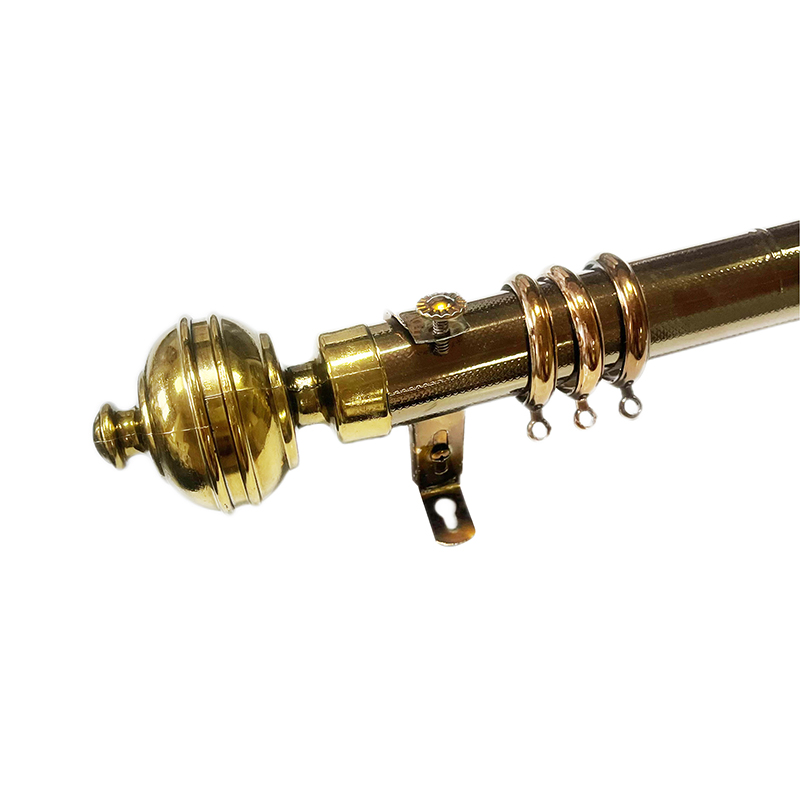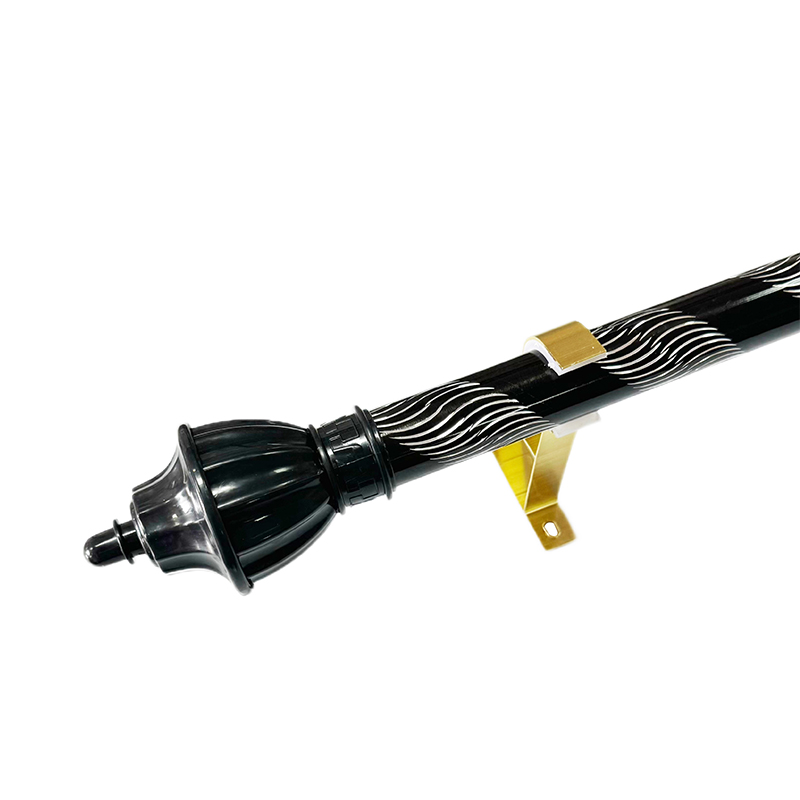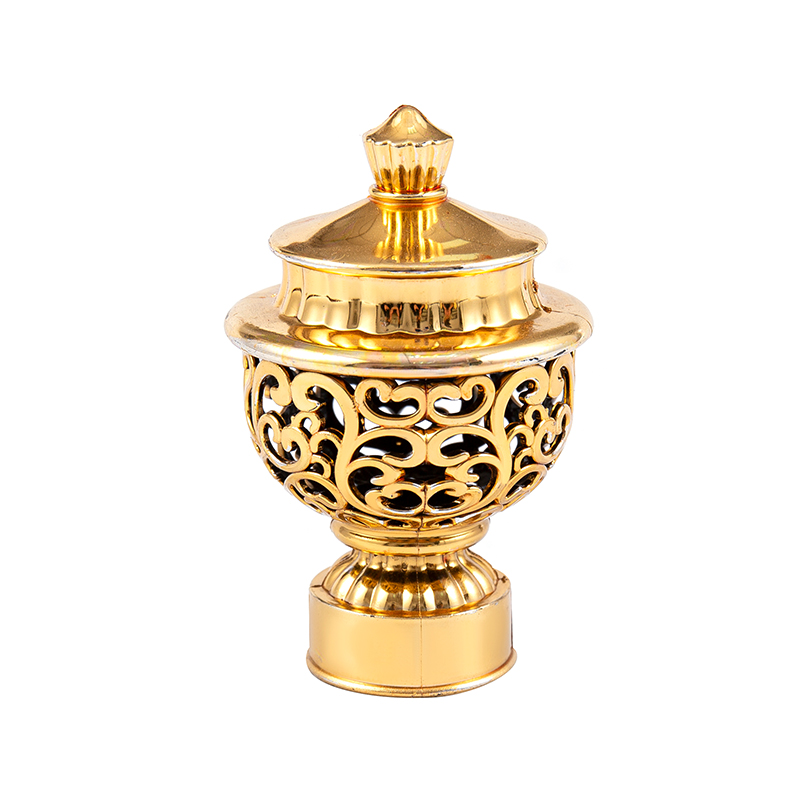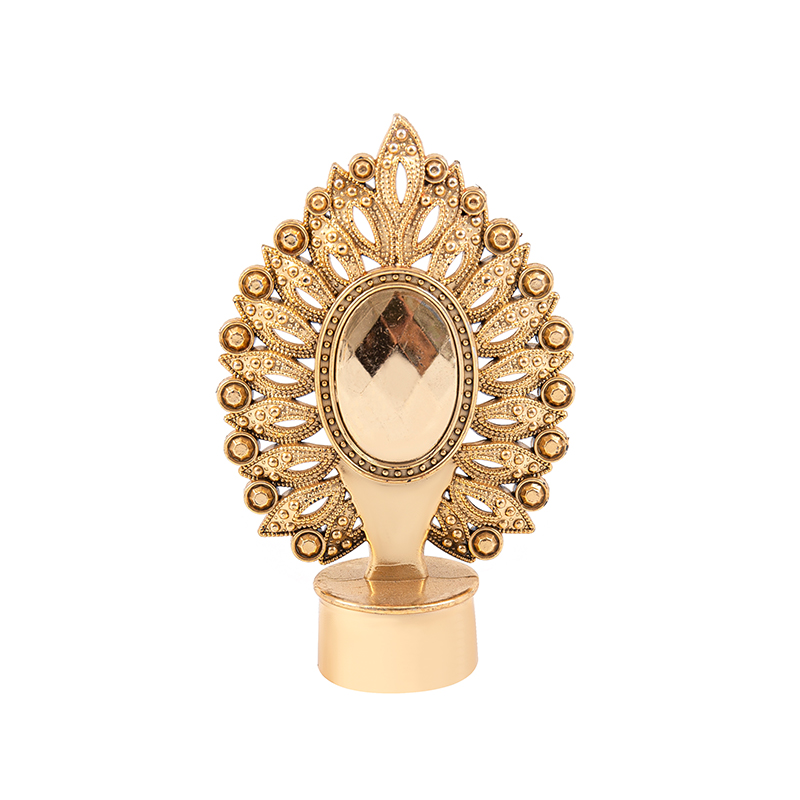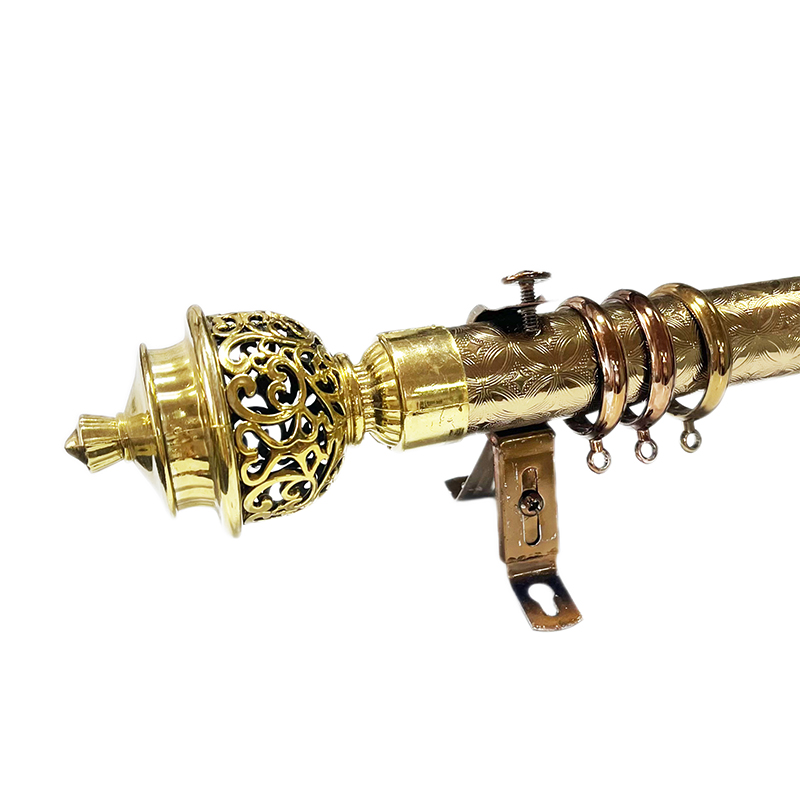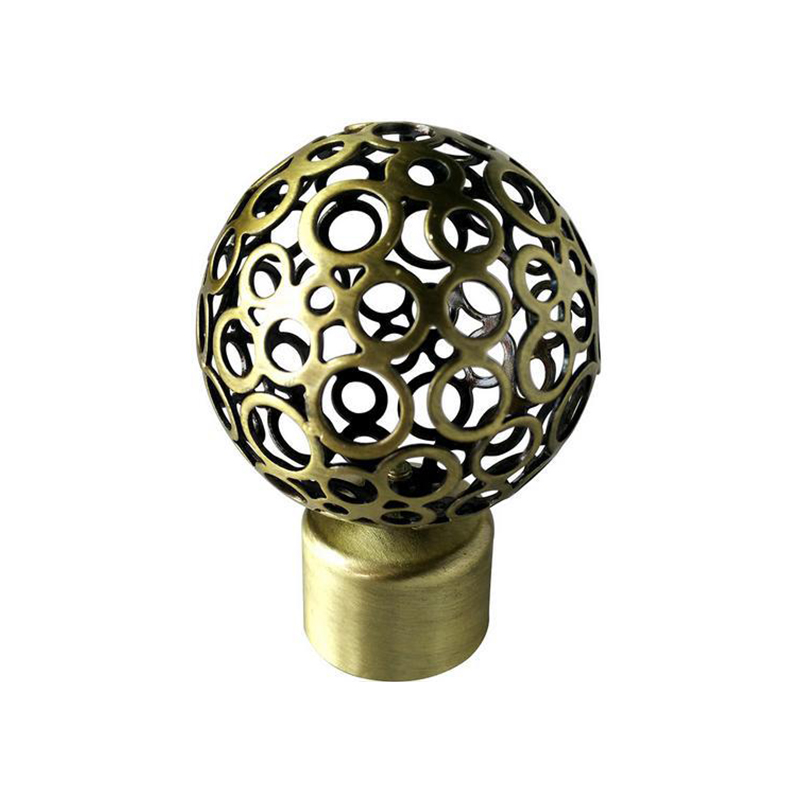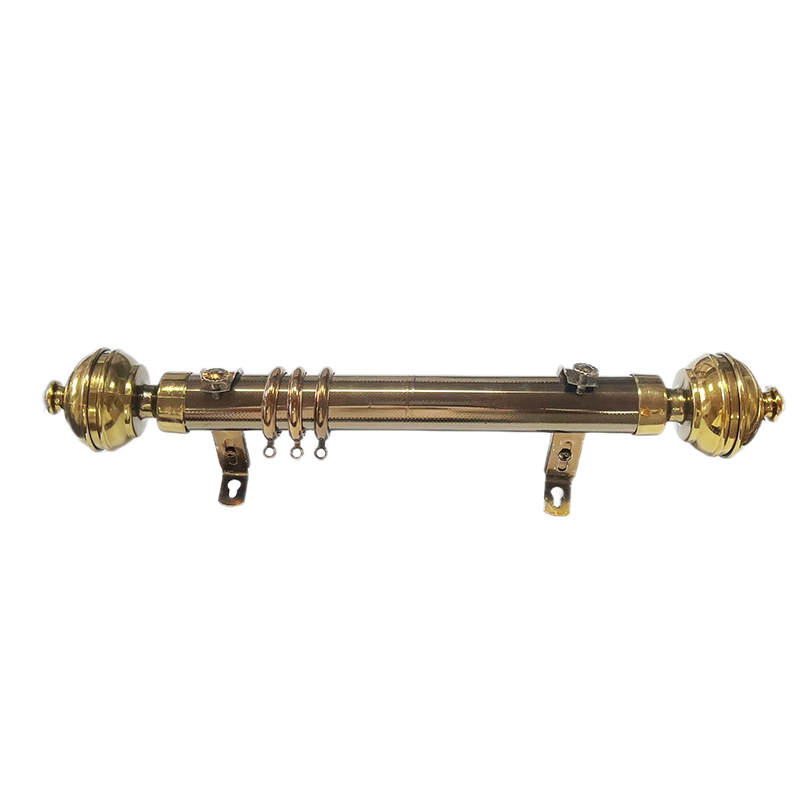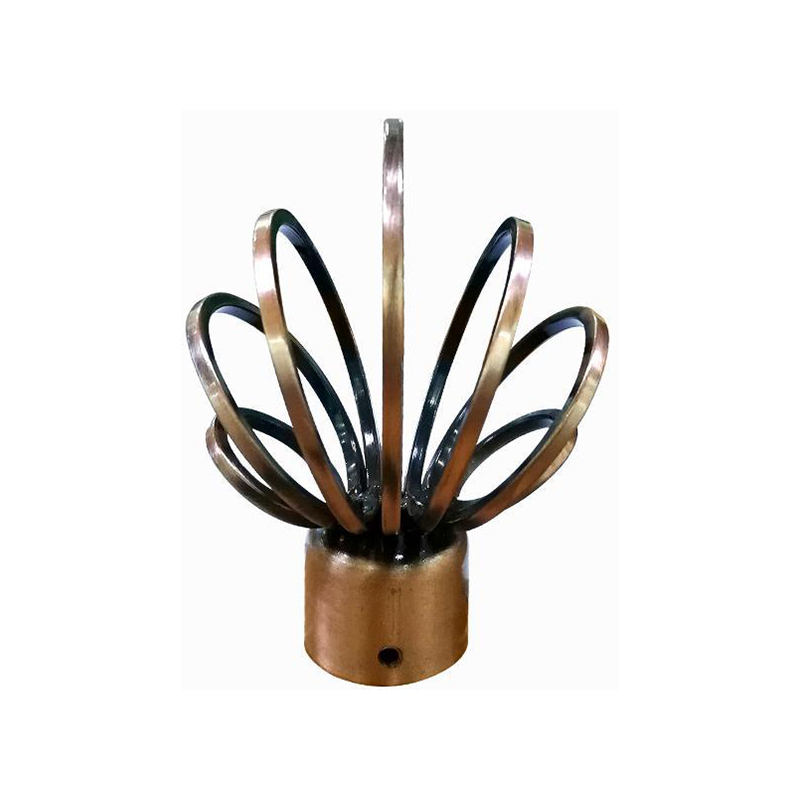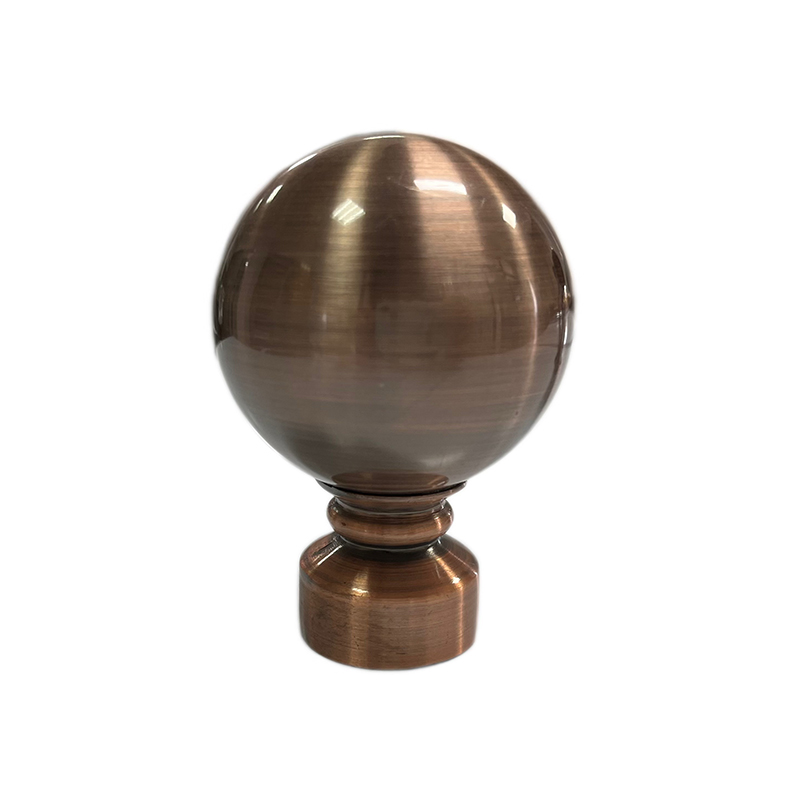Curtain rods, often an overlooked element in home decor, play a pivotal role in both the functionality and aesthetic appeal of your window treatments. In recent years, aluminum curtain rods have seen a surge in popularity, and for good reason. Moving beyond their purely utilitarian purpose, these rods have emerged as a frontrunner, offering a compelling blend of strength, versatility, and sleek design.
Why Choose Aluminum?
When selecting the ideal curtain rod for your home, the material choice is paramount. Aluminum stands out as a superior option for a multitude of reasons, offering distinct advantages over traditional materials like wood or iron.
Durability and Longevity
One of the most compelling reasons to choose aluminum curtain rods is their inherent strength and remarkable durability. Unlike flimsier alternatives that can bend or break under the weight of heavier drapes or with repeated use, aluminum offers robust support. Its high strength-to-weight ratio ensures that your curtain rods will maintain their integrity over time, resisting sagging, warping, and damage even with daily curtain manipulation. This resilience translates into a long-lasting investment, reducing the need for frequent replacements and providing consistent performance for years to come.
Rust Resistance
Another significant advantage of aluminum is its exceptional resistance to rust and corrosion. Unlike iron or steel, which are prone to oxidizing and developing unsightly rust, especially in humid environments, aluminum naturally forms a thin, protective oxide layer when exposed to air. This passive layer acts as a barrier, preventing further oxidation and corrosion. This makes aluminum curtain rods an ideal choice for any room in your home, including moisture-prone areas like bathrooms, kitchens, or laundry rooms, where traditional metal rods might quickly deteriorate. You can confidently install them knowing they will maintain their pristine appearance and structural integrity, free from unsightly rust stains.
Lightweight Design
Despite their impressive strength, aluminum curtain rods are remarkably lightweight. This characteristic offers several practical benefits. Firstly, it makes handling and transportation significantly easier, simplifying the process of bringing your new rods home and moving them into position. More importantly, the lightweight nature of aluminum greatly facilitates the installation process. Less strain is placed on your walls and mounting hardware, reducing the likelihood of damage or the need for heavy-duty anchors. This ease of installation makes aluminum curtain rods a preferred choice for DIY enthusiasts and anyone looking for a hassle-free setup, without compromising on stability or performance.
Styles and Designs of Aluminum Curtain Rods
Aluminum curtain rods are celebrated not just for their resilience but also for their incredible versatility in design. Far from being purely utilitarian, they offer a vast spectrum of aesthetic choices, allowing you to seamlessly integrate them into any interior design scheme.
Modern and Minimalist
For homes embracing contemporary aesthetics, aluminum curtain rods are often the material of choice. Their inherent sleekness and clean lines perfectly complement modern and minimalist decor. Designs often feature simple, unadorned rods that prioritize functionality and understated elegance. These rods typically forgo elaborate embellishments, focusing instead on a smooth finish and a streamlined profile that blends effortlessly with contemporary furniture and decor, creating a sophisticated and uncluttered look.
Decorative Finials and Accents
While many aluminum rods lean towards minimalism, there's also a rich selection available with decorative finials and accents. Finials, the decorative caps placed at the ends of the rod, offer an opportunity to inject personality and an additional touch of style. Aluminum allows for the creation of intricate or bold finial designs, ranging from geometric shapes and simple spheres to more elaborate artistic forms. These accents can transform a basic rod into a statement piece, drawing attention to your window treatments and enhancing the overall aesthetic of the room.
Color and Finish Options
The versatility of aluminum extends to an impressive array of color and finish options, ensuring you can find the perfect match for your existing hardware, furniture, or desired mood. Popular finishes include:
Brushed Nickel: A timeless and versatile finish, offering a soft, matte metallic look that works well with both warm and cool color palettes. It provides a subtle shine without being overly reflective.
Matte Black: A contemporary and bold choice, matte black offers a sophisticated, industrial, or dramatic flair. It creates a striking contrast against lighter walls or blends seamlessly into darker, moody interiors.
Polished Chrome: For a bright, reflective, and modern aesthetic, polished chrome is an excellent option. It offers a mirror-like shine that can add a touch of glamour and sophistication to any space.
Bronze (Oil-Rubbed or Dark): While traditionally associated with warmer, rustic, or traditional styles, aluminum rods can also mimic the look of bronze, providing a rich, dark, and often slightly textured finish that adds depth and warmth.
White: For a clean, seamless look, especially against white window frames or walls, white aluminum rods offer a subtle and understated presence.
These diverse finishes allow aluminum curtain rods to adapt to various interior styles, from industrial chic and urban contemporary to classic and transitional designs, ensuring your window hardware perfectly complements your home's unique character.
Here's a table summarizing the styles and design details of aluminum curtain rods:
|
Feature |
Description |
Common Applications / Examples |
|
Modern & Minimalist |
Sleek, simple designs with clean lines; understated elegance; prioritizes functionality. |
Contemporary homes, urban apartments, offices, minimalist decor. |
|
Decorative Finials |
Ornamental caps at rod ends; can be geometric, spherical, artistic, or themed. |
Adding personality, focal points, matching specific decor themes (e.g., coastal, traditional). |
|
Color & Finish Options |
Wide range of surface treatments and hues. |
Matching existing hardware, creating contrast, blending with walls, setting room mood. |
|
Brushed Nickel |
Soft, matte metallic, versatile. |
Transitional, contemporary, industrial. |
|
Matte Black |
Bold, sophisticated, non-reflective. |
Modern, industrial, dramatic, farmhouse. |
|
Polished Chrome |
Bright, reflective, mirror-like shine. |
Modern, glamorous, bathrooms, kitchens. |
|
Bronze (Various Tones) |
Rich, dark, often textured; mimics traditional bronze. |
Rustic, traditional, transitional, eclectic. |
|
White |
Clean, subtle, blends into lighter walls/frames. |
Coastal, Scandinavian, minimalist, blending seamlessly. |
Types of Aluminum Curtain Rods
Beyond their material and aesthetic appeal, aluminum curtain rods come in various structural configurations, each designed to meet specific curtain hanging needs and functional requirements. Understanding these different types will help you select the most appropriate rod for your window treatments.
Single Rods
The most basic and widely used type, a single rod is designed to hold one set of curtains. It's straightforward in its application, providing a clean and uncomplicated look. Single rods are versatile and suitable for standard curtains, sheers, or any single layer of fabric you wish to hang. They are typically secured by brackets on either side of the window, offering reliable support for everyday use.
Double Rods
Double rods consist of two parallel rods, usually with one positioned slightly in front of the other, often supported by specialized double brackets. This configuration is ideal for layering window treatments. The inner rod typically holds a lighter fabric, such as sheers or privacy curtains, while the outer rod accommodates heavier drapes or blackout curtains. This allows for greater control over light, privacy, and insulation, providing both functional versatility and a rich, layered aesthetic.
Telescoping Rods
Telescoping rods are designed for adjustable length, making them incredibly versatile for various window sizes. They consist of two or more sections that slide into each other, allowing you to extend or shorten the rod to fit your specific window opening without the need for custom cutting. This adjustability makes them a popular choice for homeowners who may move frequently or have windows of non-standard widths. While convenient, it's worth noting that heavier curtains may cause slight sagging at the point where the sections overlap if not adequately supported by center brackets.
Traverse Rods
Traverse rods are a more specialized type of curtain rod engineered for smooth and efficient curtain operation, particularly for heavier or wider drapes. Unlike standard rods where curtains slide directly on the rod, traverse rods incorporate an internal mechanism—often glides, carriers, or rings—that move along a track within the rod. Curtains are attached to these carriers, allowing them to open and close effortlessly with a pull cord, wand, or even motorized systems. Traverse rods prevent fabric damage from constant pulling and are ideal for frequently used curtains, ensuring a uniform appearance when opened or closed.
Here's a table clearly showing the details of different types of aluminum curtain rods:
|
Type of Rod |
Description |
Ideal Use Case |
Key Feature(s) |
|
Single Rods |
A single rod designed to hold one layer of curtains. |
Standard curtains, sheers, valances; basic window coverage. |
Simple, versatile, clean look. |
|
Double Rods |
Two parallel rods, allowing for the hanging of two layers of curtains. |
Layering sheers with drapes, blackout curtains with decorative panels. |
Offers light control, privacy, insulation; creates layered aesthetic. |
|
Telescoping Rods |
Adjustable length rod made of sliding sections. |
Windows of varying or non-standard widths; temporary installations. |
Adjustable length; no cutting required. |
|
Traverse Rods |
Features an internal track system with glides/carriers for smooth curtain movement. |
Heavy drapes, wide windows, frequently opened/closed curtains. |
Effortless opening/closing (cord/wand), prevents fabric damage, uniform drape look. |
Surface treatment process of aluminum alloy curtain rods
Aluminum alloy curtain rods have become a popular choice for modern home decoration due to their excellent durability, lightness and versatility. However, the core of its charm lies far more than the material itself, but also in its ever-changing surface treatment process. These processes not only give aluminum alloy rods a unique aesthetic appearance, but also significantly improve their corrosion resistance, wear resistance and fading resistance, which directly affects the product life and user experience.
Anodizing: The fusion of durability and color
Anodizing is one of the most common and efficient surface treatment methods for aluminum alloy curtain rods. It generates a dense and hard oxide film on the surface of aluminum through an electrochemical process. This film is not only more resistant to corrosion and wear than aluminum itself, but also has a microporous structure that can absorb dyes to achieve rich color effects.
Anodized aluminum alloy curtain rods have excellent weather resistance and can effectively resist oxidation and rust even in humid or changeable indoor environments. Its surface hardness is significantly improved, it is not easy to scratch, and it maintains long-term beauty. In addition, the anodized film is non-toxic and harmless, meets environmental protection standards, and makes the product safer in a home environment. Common colors include matte black, frosted silver, champagne gold, etc. These colors are stable and not easy to fade, providing designers with a wide range of creative space.
Powder coating: color diversity and environmental protection
Powder coating is a process of spraying dry powder paint on the surface of aluminum alloy curtain rods, and then curing it at high temperature to form a coating. Unlike traditional liquid coatings, powder coatings do not contain organic solvents, which greatly reduces VOC (volatile organic compound) emissions and is more environmentally friendly.
The advantages of powder coating are its wide range of color options and excellent coating performance. It can achieve a variety of gloss (from high gloss to matte), texture (such as sand grain, wood grain, stone grain) and color effects to meet personalized customization needs. The coating has uniform thickness and strong adhesion, and can effectively resist scratches, cracks and fading. The surface of the powder-coated aluminum alloy curtain rod is smooth and delicate, comfortable to touch, and provides additional anti-corrosion protection. This treatment method is particularly suitable for design projects that require specific color matching or high weather resistance.
Electrophoretic coating: Ultimate smoothness and uniform coverage
Electrophoretic deposition coating (EPD or E-coating) is a process that uses electric current to deposit paint particles on the surface of aluminum alloy curtain rods. It can form an extremely uniform, smooth and highly adhesive coating that can even cover the inner surface and corners of complex shapes.
Aluminum alloy curtain rods with electrophoretic coating have excellent corrosion resistance and wear resistance, and the paint film is dense and not easy to fall off. Its surface finish is high and the feel is delicate. It can present a high-grade metal texture or a transparent protective layer, so that the color of the aluminum itself can be displayed. This process is often used for curtain rods that require high-quality appearance and long-lasting protection, especially for products with strict requirements on details and uniformity.
Wood Grain Transfer Printing: Natural Beauty and Metal Strength
Wood Grain Transfer Printing is a technology that transfers realistic wood grain patterns to the surface of aluminum alloy curtain rods through a special process. This allows aluminum alloy rods to have the natural texture and warm texture of real wood while having the strength and durability of metal.
The wood grain transfer process usually includes steps such as base color coating, texture paper wrapping and high temperature curing to ensure that the wood grain pattern is clear, realistic and firmly attached. This treatment method broadens the application range of aluminum alloy curtain rods, allowing them to perfectly integrate into Chinese, Japanese, Nordic and even classical home environments, satisfying consumers' pursuit of natural elements, while avoiding the problems of deformation, cracking or insect bites that may exist in solid wood curtain rods.
Brushed Finish: Modern Sense and Delicate Texture
Brushed Finish is a process that forms a series of parallel line textures on the surface of aluminum alloy curtain rods by mechanical friction. This treatment method can eliminate mechanical knife marks on the surface of aluminum and give it a unique matte metal texture and modern atmosphere.
The surface of the brushed aluminum alloy curtain rod has a delicate luster, which is neither dazzling nor easy to leave fingerprints. Its unique texture can increase the layering of the product and make it present different visual effects under light. Common brushing directions include straight brushing, random brushing, etc. This surface treatment is particularly favored by those who pursue simplicity, industrial style or modern design style. It can be well matched with materials such as stainless steel and glass to enhance the quality of the overall space.
Polishing: Mirror Gloss and Ultimate Luxury
Polishing is a process that uses mechanical grinding and polishing to make the surface of aluminum alloy curtain rods highly smooth and mirror-like. This treatment can maximize the metallic luster of the aluminum material itself, bringing the ultimate visual impact and luxury.
The surface of the polished aluminum alloy curtain rod is flat and bright, with excellent decorative effect. It can reflect the light of the surrounding environment, making the space appear brighter and more open. However, the polished surface is relatively easy to leave fingerprints and scratches, so special care should be taken when cleaning and maintaining it. This treatment is often used for boutique home decoration that pursues ultimate luxury, modernity or specific reflective effects.
Choosing the Right Aluminum Curtain Rod
Selecting the perfect aluminum curtain rod involves more than just picking a design you like. To ensure both functionality and aesthetic harmony, a few crucial considerations should guide your decision-making process.
Measuring Your Window
Accurate measurement is the cornerstone of a successful curtain rod installation. While it might seem straightforward, a few key steps will ensure your rod fits perfectly and allows your curtains to hang beautifully:
Measure Window Width: Start by measuring the width of your window frame from outer edge to outer edge.
Add for Overhang: To allow curtains to fully clear the window when open and prevent light gaps when closed, add 4 to 8 inches (10 to 20 cm) to each side of your window frame width. This means your total rod length should be 8 to 16 inches (20 to 40 cm) wider than your window frame. This extra length provides adequate "stack back" space for your curtains.
Consider Height: Decide how high above the window frame you want to mount your rod. Generally, curtain rods are installed 4 to 6 inches (10 to 15 cm) above the window frame, or even higher, closer to the ceiling, to create an illusion of greater height and grandeur. Mark this desired height on your wall.
Account for Finials: Remember that the decorative finials at the ends of the rod will add extra length. Ensure you have enough wall space on either side of your window for these to extend without obstruction.
Considering Curtain Weight
The weight of your chosen curtains is a critical factor in determining the necessary strength and diameter of your aluminum curtain rod. While aluminum is inherently strong, selecting a rod that can adequately bear the load will prevent sagging, bending, or even detachment from the wall over time.
Lightweight Curtains: For sheers, voile, or lightweight cotton curtains, most standard aluminum rods will suffice.
Medium-Weight Curtains: Standard drapes made from linen, light velvet, or unlined cotton will require a moderately robust rod. Look for rods with a good diameter (e.g., 1 inch or 2.5 cm) and consider using a center support bracket if the window is wide.
Heavy Drapes: For lined blackout curtains, heavy velvet, thermal drapes, or very wide window treatments, opt for a thicker diameter aluminum rod (e.g., 1.25 inches or 3.2 cm or more) and ensure ample, well-secured support brackets, including a center bracket for wider spans. Some manufacturers specify the maximum weight capacity for their rods, which is a useful guide.
Matching Your Decoration
Beyond functionality, the aesthetic appeal of your curtain rod significantly contributes to the overall look and feel of your room. Aluminum's versatility makes it easy to find a match, but conscious choices will elevate your design:
Finish and Color:
Blend In: For a subtle look, choose a rod finish that matches your wall color or existing trim. White rods on white walls disappear, allowing the curtains to be the focal point.
Stand Out: For a more dramatic statement, select a finish that contrasts with your walls, such as matte black against light walls, or polished chrome for a sleek, modern touch.
Coordinate: Match the rod's finish to other metal accents in the room, such as door handles, light fixtures, or furniture hardware (e.g., brushed nickel with brushed nickel door knobs).
Style of Finials:
Modern/Minimalist: Opt for simple, geometric, or unadorned finials.
Transitional/Eclectic: Spherical, cap, or subtle decorative finials work well.
Formal/Traditional: While aluminum often leans modern, some designs can feature more classic or ornate finial shapes if desired.
Room's Overall Aesthetic: Consider the dominant style of your room. An industrial-inspired space might benefit from a raw or matte black aluminum rod, while a bright, airy coastal room could suit a brushed nickel or white finish. The rod should feel like an integrated part of your decor, not an afterthought.
Installation Guide
Installing aluminum curtain rods is a straightforward process that most homeowners can accomplish with basic tools and a little patience. A proper installation ensures not only the aesthetic appeal of your curtains but also their secure and lasting function.
Tools and Materials
Before you begin, gather the following necessary tools and hardware:
Aluminum Curtain Rod Kit: This should include the rod itself, brackets, finials, and often mounting screws and wall anchors.
Pencil: For marking drill points.
Tape Measure: For accurate measurements.
Level: Essential for ensuring your rod is perfectly horizontal. A long level is preferable.
Drill: With appropriate drill bits for pilot holes and wall anchors (usually slightly smaller than the anchor diameter).
Screwdriver: To secure the screws (either Phillips head or flathead, depending on your screws).
Stud Finder (Recommended): To locate wooden studs behind drywall for stronger mounting points.
Step Ladder or Stool: To reach the desired height above your window.
Safety Glasses: Always wear eye protection when drilling.
Step-by-Step Installation Instructions
Follow these steps for a secure and professional-looking installation:
Determine Rod Placement and Mark:
Using your tape measure, determine the desired height for your rod above the window frame (typically 4-6 inches higher than the frame, or even closer to the ceiling for a grander look).
Measure out from the side of the window frame the desired overhang (4-8 inches on each side).
Hold one bracket against the wall at your chosen height and side-overhang point. Use your level to ensure the top of the bracket is perfectly horizontal.
With the bracket in place, use your pencil to mark the screw holes.
Repeat this process for the second bracket on the opposite side, ensuring it is at the exact same height and distance from the window frame as the first. Use your level to draw a light, level line between the two marked points to ensure horizontal alignment.
For wider windows: If your rod requires a center support bracket (usually for spans over 60-70 inches or with heavy curtains), mark its position precisely in the middle of the window, aligned with the height of the end brackets.
Drill Pilot Holes:
If you've located a wooden stud, drill a pilot hole slightly smaller than your screw's diameter.
If drilling into drywall without a stud (which is common for curtain rods), drill holes sized appropriately for your wall anchors.
Important: Start with a smaller drill bit and increase the size if needed, rather than starting too large.
Insert Wall Anchors (if applicable):
Gently tap the wall anchors into the drilled holes until they are flush with the wall surface. Do not overtighten or force them, as this can damage the drywall. Some anchors require a screwdriver to twist them in.
Attach Brackets:
Align each bracket with its corresponding screw holes.
Insert the screws through the bracket and into the wall anchors or pilot holes.
Using your screwdriver (or drill with a screwdriver bit on a low torque setting), firmly secure each screw. Do not overtighten, especially with wall anchors, as this can strip them.
Assemble and Place the Rod:
If you have a telescoping rod, extend it to the desired length.
Slide your curtains onto the rod before placing it on the brackets. Make sure the curtain's heading faces the correct direction.
Rest the curtain rod securely into the installed brackets.
Attach the decorative finials to each end of the rod. Tighten them by hand or with a small wrench if they have a set screw.
Final Adjustments:
Step back and visually check that the rod is perfectly level. Make minor adjustments to the curtains if needed to ensure they hang evenly.
Tips for a Secure Installation
Use a Stud Finder: Whenever possible, mount at least one screw of each bracket directly into a wall stud for maximum stability, especially for heavier curtains.
Choose the Right Anchors: For drywall, always use appropriate wall anchors (e.g., self-drilling anchors, toggle bolts, or expansion anchors) that are rated for the weight of your curtains and rod. Avoid using just screws into drywall without anchors, as they will pull out over time.
Don't Skimp on Brackets: For wide windows (over 60-70 inches) or heavy curtains, always use a center support bracket in addition to the two end brackets to prevent sagging.
Pre-Drill Properly: Using the correct drill bit size for pilot holes and anchors is crucial. Too small, and screws won't go in; too large, and anchors won't hold.
Check Level Repeatedly: Take your time with the leveling step. A crooked rod will be visually distracting and diminish the appearance of your curtains.
Consider Curtain Weight: Always match the rod's diameter and the number of supports to the weight of your curtains. A thin rod won't hold heavy drapes without sagging.
Maintaining Your Aluminum Curtain Rods
Aluminum curtain rods are celebrated for their low maintenance requirements, but a little care can go a long way in preserving their aesthetic appeal and ensuring their longevity. Their inherent rust resistance means you won't typically deal with the problems associated with iron or steel, but keeping them clean and protected from physical damage will ensure they look their best for years.
Cleaning Tips
The key to cleaning aluminum is to use gentle methods that won't scratch the finish or leave residue.
Regular Dusting: The simplest form of maintenance is regular dusting. Use a soft, dry microfiber cloth or a feather duster to gently wipe away any accumulated dust. This prevents dust buildup that can dull the finish over time.
Mild Soap and Water: For deeper cleaning or to remove fingerprints and smudges, mix a small amount of mild dish soap with warm water. Dampen a soft cloth with this solution (do not saturate it) and gently wipe down the rod.
Wipe Dry Immediately: After cleaning with a damp cloth, immediately follow up with a clean, dry cloth to thoroughly dry the rod. This prevents water spots and ensures the finish remains pristine.
Avoid Harsh Cleaners: Never use abrasive cleaners, scouring pads, strong chemical detergents, or ammonia-based products on your aluminum curtain rods. These can scratch the surface, strip the finish, or cause discoloration. If you're unsure, always test a small, inconspicuous area first.
For Stubborn Spots: For very stubborn marks, a diluted solution of white vinegar (1 part vinegar to 1 part water) can be used, but always wipe dry immediately and test in an hidden spot first.
Preventing Scratches and Dents
While durable, aluminum can still be susceptible to scratches and dents if mishandled. Taking simple precautions will keep your rods looking new.
Careful Installation: During installation, be mindful of dropping tools or letting the rod clang against hard surfaces. Protect the rod by laying it on a soft cloth or blanket when not actively installing it.
Gentle Curtain Movement: When opening or closing curtains, especially those with grommets or metal rings, guide them gently along the rod. Avoid aggressively yanking or forcing them, which can cause the metal rings to scrape against the rod's surface.
Proper Finial Attachment: Ensure finials are securely, but not overly tightly, attached. Loose finials can rattle and potentially cause wear marks. Overtightening can also stress the rod.
Avoid Contact with Sharp Objects: Keep sharp objects away from the rods. Tools, ladders, or even decorative items positioned too close can accidentally scratch or dent the surface.
Consider Curtain Liners: For heavy curtains or those with rough backings, a curtain liner or a soft interlining can reduce direct friction against the rod, especially if the curtains are frequently opened and closed.

 English
English Français
Français عربى
عربى
